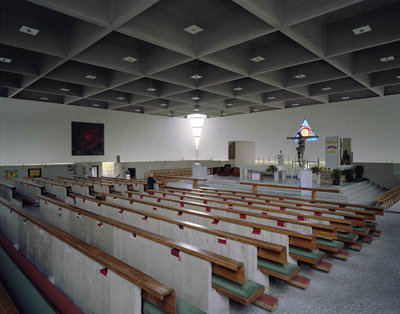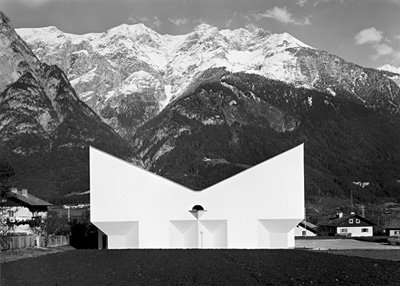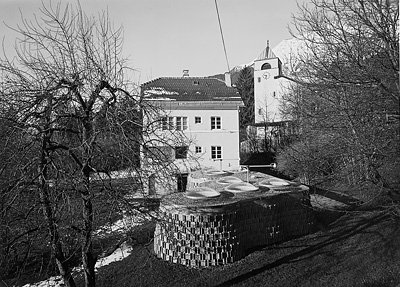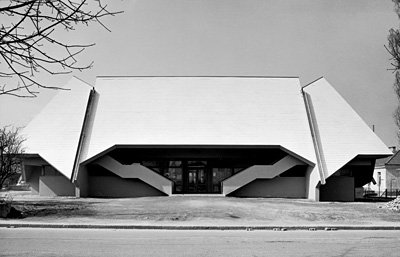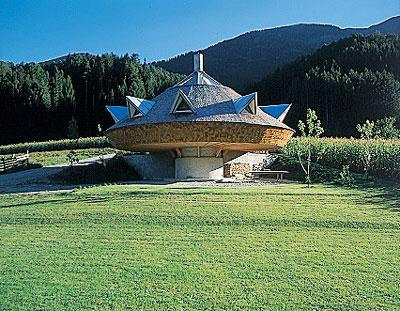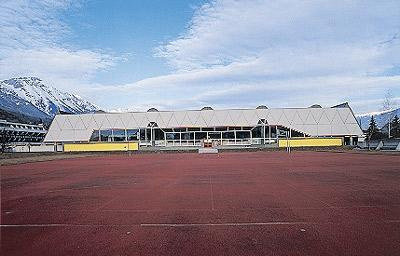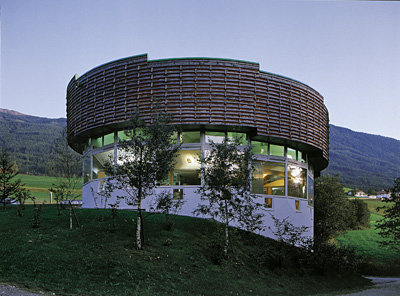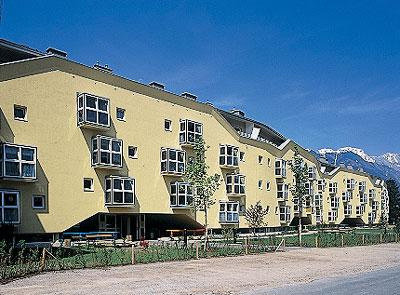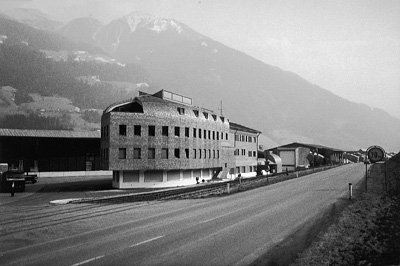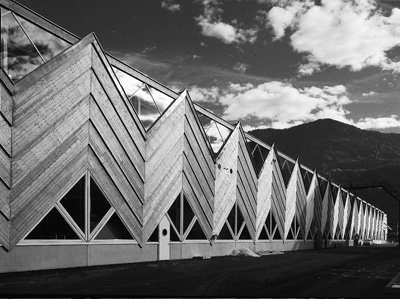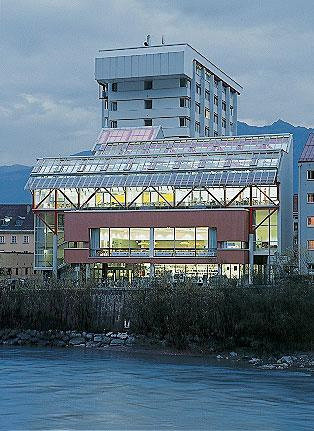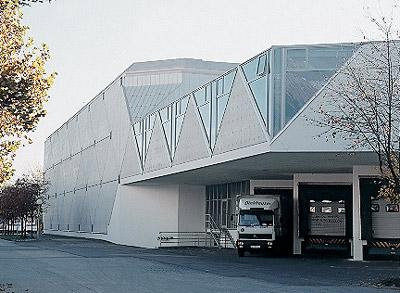Pfarrkirche St. Pius (St. Pius parish church)
Architecture: Josef Lackner (1958-1960) Builder-owner: Pfarre St. Pius X. Open to the public: by appointment only Accessibility: on Schützenstraße, bus O from the city centre Artworks by Hans Ladner.
Close by you find the new BTV branch by Hannes Vogl-Fernheim (2004).
The church for the new Olympic Village was Lackner’s first major building. With the spatial organisation as well as the then "strange” choice of materials (raw concrete, granite cobblestones) he was way ahead of his time. The square central congregation room rests on a somewhat higher podium and is encircled by a low balustrade wall. This rather closed "central box”, as one might describe it, is then surrounded, on a slightly lower lever, by a stations of the Cross assageway the glass panels of which open up to the everyday life outside.


